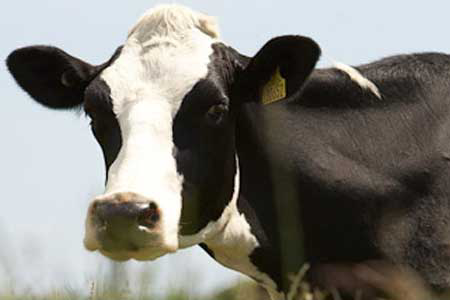Mycotoxins and the occurance of mastitis and laminitis

Since their first discovery, more than 200 different trichothecenes (type A e.g., T-2 toxin and type B e.g., deoxynivalenol) have been documented. Even though dairy cows have some capacity to protect themselves against the harmful effects of mycotoxins, these substance are still a menace to ruminants.
As feed passes more quickly through the rumen of modern dairy cows due to higher feed intake, rumen microbes have less time to detoxify mycotoxins. The combined factors of intensive farming of dairy cattle, incompetent rumen microflora action, nutritional imbalance and mycotoxins in the feed are key factors that allow mycotoxins to escape detoxification and be absorbed by the intestine.
The occurrence of mycotoxins in feed is very often connected to increased incidences of metabolic disorders such as ketosis, retained placentas, displaced abomasum, mastitis, metritis, lameness, elevated somatic cell counts and consequently, slight decreases in milk production. Subclinical mycotoxicoses decrease profitability by lowering milk production and quality while increasing expenses from inappropriate veterinary therapies. The presence of T-2 toxin in cattle feed can result in gastroenteritis and intestinal hemorrhages. T-2 toxin has also been related to feed refusal, gastrointestinal lesions, bloody diarrhea, low feed consumption and decreased milk production.
The impact of deoxynivalenol in dairy cattle is controversial, but data have shown an association between deoxynivalenol intake and poor performance. Besides the effects mentioned above, trichothecenes are also known to trigger metabolic disorders. Exposure to deoxynivalenol can increase inflammatory reactions in the form of mastitis and laminitis. In addition, it was observed that deoxynivalenol may also reduce phagocytic and neutrophil activity, leading to severe symptoms such as the occurrence of mastitis and lameness. Accurate feeding of dairy cows in combination with continuous mycotoxin risk management is the key to managing the optimal performance of the livestock business.
Source: Biomin











